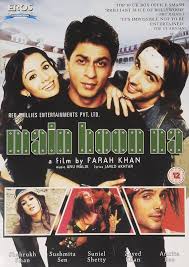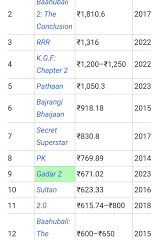Main Hoon Na: A Bollywood Classic That Redefined Cinema

Introduction
‘Main Hoon Na’, a film directed by Farah Khan and released in 2004, is considered a significant milestone in Bollywood cinema. Combining action, romance, and comedy, the movie explores themes of love, friendship, and patriotism. Its unique blend of genres, along with iconic music and memorable performances, has cemented its place in the hearts of audiences. With the ongoing popularity of cult classic films, understanding the relevance of ‘Main Hoon Na’ today provides insight into changing dynamics in Indian cinema.
Key Elements of the Film
The film stars Shah Rukh Khan as Major Ram Sharma, who embarks on a mission to protect a college in which the daughter of a key military figure is enrolled. The storyline is engaging, with Ram posing as a student to blend in, which sets the stage for comedic and emotional moments. The film features a strong supporting cast, including Sushmita Sen, Zayed Khan, and Sunil Shetty, who each contribute to the layered narrative.
‘Main Hoon Na’ is also notable for its vibrant soundtrack. Songs like ‘Chura Liya Hai Tumne Jo’ and ‘Gori Gori’ not only topped the charts but also played a significant role in the film’s storytelling. The music, composed by Anu Malik, continues to resonate with fans, as it adds to the film’s overall charm and cultural footprint.
Cultural Impact
The film’s legacy extends beyond its commercial success. ‘Main Hoon Na’ adeptly addresses important issues like nationalism and the youth’s role in society. It resonated with a generation that was beginning to embrace globalization while holding onto traditional values. The catchy dialogues and memorable scenes have been referenced and parodied in various forms of media, reflecting its deep-rooted influence in pop culture.
Significance Today
Nineteen years after its release, ‘Main Hoon Na’ remains a beloved classic. Its themes of family, loyalty, and heroism still resonate with audiences. With the advent of streaming platforms, the film has reached a new audience, allowing younger viewers to appreciate the narrative and performances that shaped Bollywood’s landscape. Furthermore, the film opened doors for women directors in the industry, inspiring future filmmakers to push boundaries and explore diverse narratives.
Conclusion
‘Main Hoon Na’ is more than just a film; it is a cultural phenomenon that continues to impact audiences and inspire filmmakers. As Bollywood evolves, the essence and charm of this classic serve as a reminder of the creativity that marked the early 2000s. Looking ahead, the film’s legacy is likely to endure, further solidifying its status as a pivotal work in Indian cinema.









